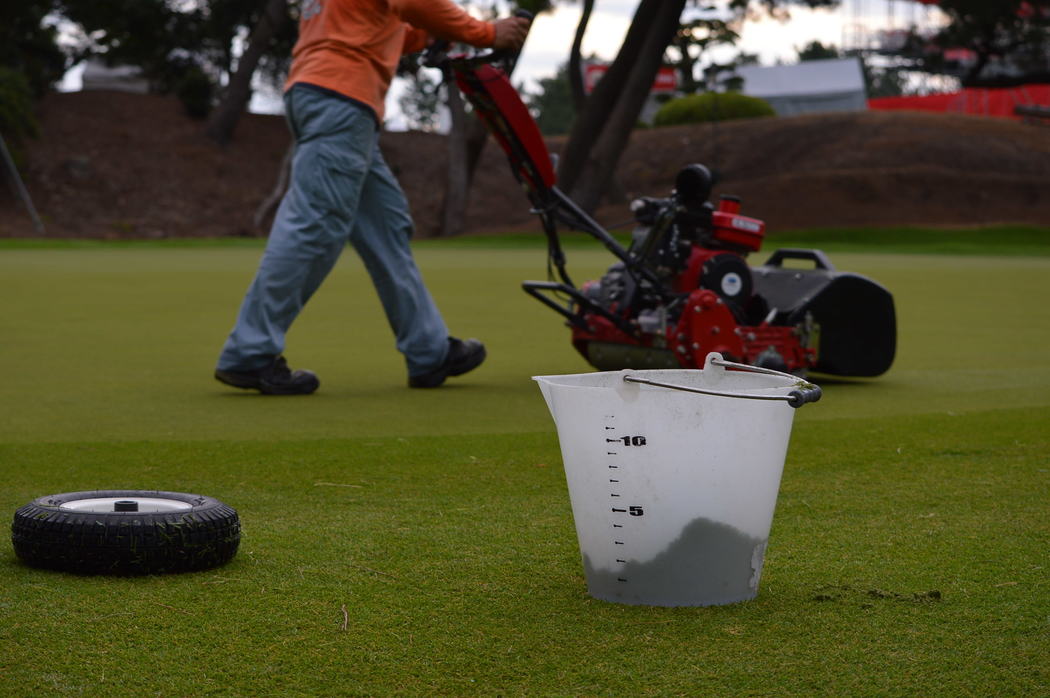Chapter 5 Measuring clipping yield from putting greens
Greenkeeping, at its core, is about controlling the growth rate of the grass.7 To get the desired green speed, or the maximum disease resistance, or the fastest divot recovery without too much thatch production, one must adjust the growth rate of the grass. An easy technique to monitor the growth rate is to measure the clipping yield from golf course putting greens.

Using a bucket to measure the volume of clippings from a single mow of a putting green
All that is required to do this is a plastic bucket with volume marks on the side. The person mowing greens can empty the clippings into the bucket, shake until the clippings are level, and then record how many liters of clippings were mown from the green. It is customary to correct the clipping yield for the size of the green, expressing the clipping yield as volume per area. I prefer units of mL/m2 for daily and monthly measurements, and L/m2 for annual totals. See the Units of measurement for more about this.
Why might one want to do this? These data on clipping yield can be used for a number of things. Because different mowers are usually used on the course, it can be useful to check the yield across the course to find out if all the mowers are set up in the same way. By measuring the clipping yield, one can track the effect of fertilizer applications, and get some idea of when the growth rate changes and fertilizer re-application may be required.
One can also use these data to measure the influence of plant growth regulators such as trinexapac-ethyl, to evaluate the effect of weather and maintenance practices on growth, to see if greens situated in different microclimates have different growth rates, and to track clipping yield for special events. For example, under tournament conditions it is usually desirable to have a very slow growth rate, because that leads to more consistent conditions through the day. Also, when the grass is growing slowly, the greens have the potential to be faster.
I don’t know what the normal amount of clippings will be for any golf course. That depends on the season and the type of grass and on the desired growth rate. A busy course needs to have a faster growth rate, to recover from traffic damage. A course without much play doesn’t need as much growth. Let’s say that the normal growth rate at a golf course is 50 mL/m2/d. During a tournament, the ball may roll better through the day if the clipping yield is less than 10 mL/m2/d. By tracking how the clipping yield changes and how fertilizer and irrigation and plant growth regulators affect the clipping yield, one can prepare for special events or tournaments with consistency and precision.
There are other ways to measure clipping yield too – measuring the mass of clippings is one way, and keeping track of the number of times the mower baskets need to be emptied is another. I think the easiest and most consistent way to measure as part of routine golf course maintenance is to note the volume of clippings.
This chapter was originally published in a slightly different form in my GCM China column in 2015 (https://www.blog.asianturfgrass.com/2015/07/an-easy-technique-for-monitoring-the-growth-rate.html), and it was published again as a chapter in the Short Grammar (https://leanpub.com/short_grammar_of_greenkeeping).↩